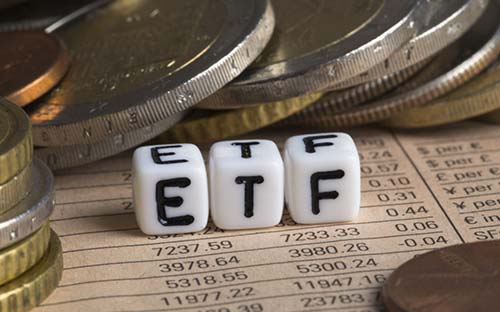ETFs recently marked their 20th birthday in Europe amid uncertainty and volatility. The Covid-19 crisis has hit indices hard but opportunities in these index-based investments still exist, say experts.
KENNETH LAMONT, SENIOR ANALYST, MANAGER RESEARCH, PASSIVE STRATEGIES, MORNINGSTAR
How is the current crisis testing the resilience of ETFs?
The current crisis has put this fund structure through its paces like never before. Extreme market pressures have seen ETFs tracking less-liquid exposures, such as corporate debt [which has traded] at significant discounts to their NAVs [net asset values]. This allowed investors to get out of their positions, albeit at a cost even when the underlying bond markets seized up.
In fact, ETFs became a price discovery tool for a market in which liquidity had temporarily evaporated. This is a tough test that ETFs passed with flying colours.
Other more niche exchange-traded products haven’t fared so well. Several WisdomTree 3x leveraged Oil ETPs have shuttered following the abrupt tumble in oil prices. A case of products designed for betting on short-term commodity price volatility, breaking in the face of elevated short-term commodity price volatility can hardly be deemed a success.
Elsewhere, some thematic ETFs have hit it big. As I write the VanEck Vectors Video Gaming & eSports ETF is up 20% for the year for GBP investors. Other winning themes include cloud computing and healthcare innovation. The biggest thematic losers include the unfortunate iShares Ageing Population ETF.
HOWIE LI, HEAD OF ETFS, LEGAL & GENERAL INVESTMENT MANAGEMENT
Public health, on a global scale, is high on the agenda, as epidemiologists and scientists struggle to understand Covid-19. Does this present an opportunity for healthcare-oriented strategies?
Telehealth is a key sector in our healthcare strategy that witnessed a strong surge in demand since the onset of Covid-19. With a large part of the world population working from home, performance was also led by remote monitoring companies due to the increasing reliance of life science on platforms to manage pharmaceutical sales activities. In fact, the L&G Healthcare Breakthrough Ucits ETF outperformed the MSCI World Index by more than 10% this first quarter.
Approximately a fourth of the ETF’s constituents took part in the innovative research for diagnosis or treatment of Covid-19. Indeed, Abbott, Thermo Fisher Scientific, and Danaher produced diagnostics, while therapeutic companies such as Regeneron, Moderna and Incyte have been working towards developing treatments and vaccines.
Telehealth not only helped doctors appoint remote visits but has also expanded its activity to new usage instances such as dialysis and pre-surgical screenings. It enables people to stay at home while receiving the necessary speciality care, also ensuring the continuity of speciality medical fields.
When healthcare providers and policymakers reflect on the Covid-19 crisis, we believe that investments into the decentralisation of health systems, digital healthcare, early detection and prevention, and robot/AI-assisted technicians will help manage healthcare more efficiently and mitigate future health crises.
WALLACE TSANG, ASIA-PACIFIC HEAD OF INTERMEDIARY BUSINESS, VALUE PARTNERS GROUP
What trends have you seen emerging during these unprecedented times?
As the coronavirus pandemic impact continues to restrict global demand and ruin the supply chain, investors generally remain cautious to overly expose the key part of their assets tied to economic cycles. For risk diversification, investors have started to deploy their assets to tools which have low correlation with traditional risky assets.
During the course of the flight to safety, gold is supportive due to its high liquidity nature and is traditionally treated as a safe-haven asset. With the support of a negative interest rate environment, weak sentiment in US equity markets and in high yield bond markets, investors are gaining stronger appetite to invest in gold.
In the supply perspective, the gold price rally just started last year. In the past seven years, gold price performance was flat, which didn’t bring any incentive to gold miners to ramp up their output or enhance the production efficiency. We expect US dollar strength will be gradually faded out after the recent upswing upon consecutive Fed rate cuts. Relative weakness of the US dollar was supportive of gold price performance historically, and is expected to be going forward.
Moreover, global economic growth momentum this year, and even in 2021, would be in question after the deep cut by the pandemic impact; all major central banks would continue to expand their balance sheets through massive quantitative easing, as well as intensifying their fiscal deficit. All are favourable to gold price performance.
However, after a sharp rally in gold [starting in Q3 2019], its price would be volatile because of ongoing profit-taking and significant flows due to its high liquidity nature. Nonetheless, we believe any temporary setback in its worth provides opportunity for investors to accumulate, as the uptrend of performance has just started while most key factors for the gold price to rally are in place.
© 2020 funds europe





